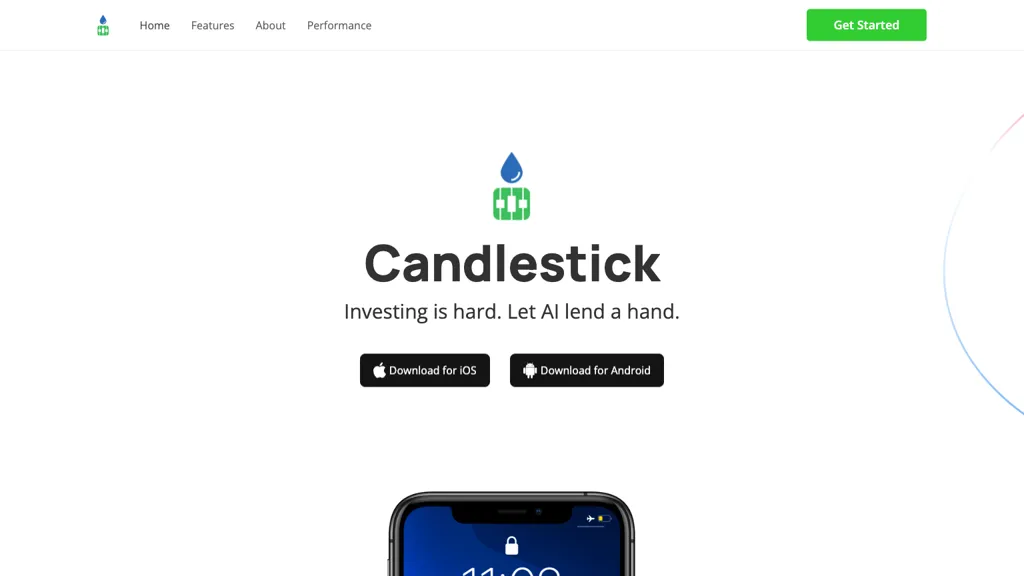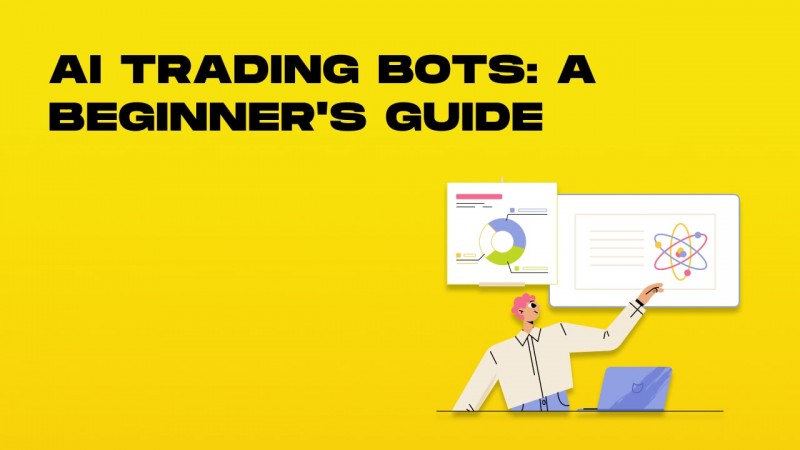20 Handy Info To Deciding On AI Stock Picker Analysis Sites
20 Handy Info To Deciding On AI Stock Picker Analysis Sites
Blog Article
Top 10 Tips To Evaluate The Strategy Customization Of Ai Stock Forecasting And Analyzing Trading Platforms
The ability to customize the trading platform in accordance with your trading goals, tolerance for risk, and market conditions are one of the key features of AI-powered stock prediction and analysis trading platforms. A platform offering a range of customizable options can help you improve your trading. Here are the top 10 tips for evaluating the strategy customization capabilities of these platforms:
1. Evaluate Pre-Built Strategy Templates
Variety of templates: Check whether the platform has an array of pre-designed strategies to suit different styles of trading (e.g. swing trading, day trading, long-term investment).
User-friendliness: Consider how easy it is to apply and alter these templates to meet your requirements.
Performance history: Check if the platform offers historical performance data on pre-built strategy.
2. Assess Custom Strategy Creation
Drag-and-drop tools: Select platforms with drag-and-drop interfaces that permit you to quickly create personalized strategies.
Check the platform's coding options. For advanced users, it may be beneficial to utilize custom scripting language (e.g. Python or R).
Flexibility. You must define key components such as risks management parameters, entry/exit regulations, as well as any other components that comprise your strategy.
3. Check for Backtesting Capabilities
Historical data: Find out if your platform offers enough historical data to test strategies for backtesting.
Modifiable parameters - Make sure that you are able to alter parameters (e.g. timeframes, indicator) during back-testing.
Performance metrics: Check if the platform offers specific performance metrics that can be used to backtest strategies (e.g. win rate sharpe ratio, drawdown).
4. Evaluate Real-Time Strategy Testing
Paper trading: Test strategies in real-time with paper trading or simulation.
Live testing: See whether you are able to run strategies on live markets using small amounts of capital to test their effectiveness.
Real-time adjustments: Check whether you are able to tweak strategies in real-time based on market conditions.
5. Evaluate the level of integration based on technological indicators
Check if there is an indicator library.
Custom indicators: Ensure that you can create or import custom indicators to incorporate into your strategies.
Combination of indicators Examine to see if the platform supports combining multiple indicators for more complex strategies.
6. Check for Risk Management Tools
Stop-loss/take-profit: Ensure the platform allows you to set stop-loss and take-profit levels within your strategies.
Position sizing. Consider whether you could create rules for sizing positions (e.g. percentage or a fixed amount) and control the risk.
Risk-reward ratio: Verify if the platform supports setting risk-reward ratios for individual trades or strategies.
7. Evaluate Multi-Asset Strategy Support
Asset classes: Check that the platform is able to provide strategies for a variety of asset classes (e.g. ETFs, stocks or options or forex).
Strategies for cross-assets: Determine if you're able to design strategies that take advantage of different asset classes.
Market coverage. Make sure the platform has market coverage that you're looking to invest in (e.g. US international, cryptocurrencies).
8. Evaluate the automation and Execution
Automated trading: Make sure the platform supports automated execution of strategies based upon predefined rules.
Types of orders - Make sure that the platform supports a range of order types for execution strategies (e.g. stop limit, market or stop).
Latency: Make sure that the platform is running at low latency when trading, especially if you employ high-frequency strategies.
9. Look for tools for optimizing your strategy.
Parameter optimization: Make sure the platform has tools to optimize the parameters of your strategy (e.g. grid search or genetic algorithm).
Machine learning integration Check to see if your platform incorporates machine learning in order to improve and refine strategies.
Analyze scenarios: Determine if the platform allows you to try different strategies in different market scenarios (e.g. bear bull, bear volatile).
Check out the User Feedback and Community Feedback
User reviews: Review user feedback to assess the platform's ability to tailor strategies.
Forums for community members: See whether you can locate forums where members discuss and share their custom strategies.
Support resources: Ensure that the platform has tutorials, documentation, as well as webinars to aid users in developing and optimizing strategies.
Bonus Tips
Trial period - Use the trial period for free to test strategy customization capabilities.
Scalability - Make sure that the platform you choose can handle your evolving trading strategies.
Customer Support: Make sure that the platform provides support for any issues related to the strategy or questions.
These suggestions will allow you to assess the options for customization of AI trading platforms which analyze and predict the market. This way you can pick one that best suits your objectives in trading and allows you refine and implement your strategies. A platform that has a wide range of customization options can help you better adjust to market trends and enhance the performance of trading. Take a look at the best ai investment platform url for website recommendations including best ai stock, best ai trading app, ai investing app, ai stock picker, ai trading, ai stocks, incite, ai trade, ai for investment, ai for trading and more.
Top 10 Tips For Evaluating The Scalability Ai Trading Platforms
To ensure AI-driven stock trading and prediction platforms can be scaled, they must be able to deal with the ever-growing amount of data and the complexity in markets, and also user demands. Here are the top 10 suggestions on how to evaluate the scaleability.
1. Evaluate Data Handling Capacity
Tip: Make sure the platform you are considering is able to handle and analyze large data sets.
Why: Scalable platform must be capable of handling the increasing amount of data without compromising performance.
2. Test Real-Time Processing Capabilities
TIP: Examine how the platform can process real-time data streams for example, live stock prices, or breaking news.
Why: Analyzing in real-time is crucial to make trading decisions. delay can result in miss opportunities.
3. Cloud Infrastructure and Elasticity: Check it out
TIP: Make sure your platform is cloud-based (e.g. AWS, Google Cloud or Azure) and is able to scale resources dynamically.
Why: Cloud platforms offer flexibility, allowing the system to increase or decrease its size depending on the demand.
4. Evaluate Algorithm Efficiency
Tip: Check the computational effectiveness and the accuracy of AI models for predictions.
Why: Complex algoriths are resource-intensive Therefore, optimizing these algorithms is vital for scalability.
5. Learn more about Parallel Processing and Distributed Computer Systems
Make sure the platform is using distributed computing or parallel computing frameworks.
The reason: These technologies speed up the processing of data and allow for analysis across multiple nodes.
Examine API Integration & Interoperability
Tip: Check the platform's integration with external APIs.
The reason: seamless integration means that the platform is adaptable to new data sources and trading environments.
7. Analyze User Load Handling
You can simulate users and see how the platform reacts.
What is the reason: A platform that can scale should be able to keep up with performance even as the number of users grow.
8. Evaluation of Model Retraining and Adaptability
Tips Check how often the AI models are taught on new data.
The reason is that markets change and models need to be able to adapt rapidly to keep their the accuracy.
9. Check Fault Tolerance (Fault Tolerance) and Redundancy
TIP: Ensure that the platform is equipped with failover mechanisms and redundancy for hardware or software malfunctions.
What's the reason? Downtime can be expensive for traders, and fault tolerance is vital to ensure scalability.
10. Monitor Cost Efficiency
Analyze your platform's cost, including the cloud resources, storage and computing power.
What is the reason? Scalability must come at a price that is affordable. This means balancing performance against expense.
Bonus Tip: Future-Proofing
Platforms must be designed to integrate emerging technologies such as quantum computing and advanced NLP. They should also adjust to regulatory changes.
It is possible to assess the efficacy and scalability of AI trading and stock prediction systems by looking at this aspect. This will ensure that they are efficient, robust and prepared for growth. Read the most popular her response on ai stock prediction for blog recommendations including chart analysis ai, best ai stock prediction, ai copyright signals, best ai for stock trading, ai options, trading ai tool, invest ai, ai tools for trading, ai software stocks, ai investment tools and more.